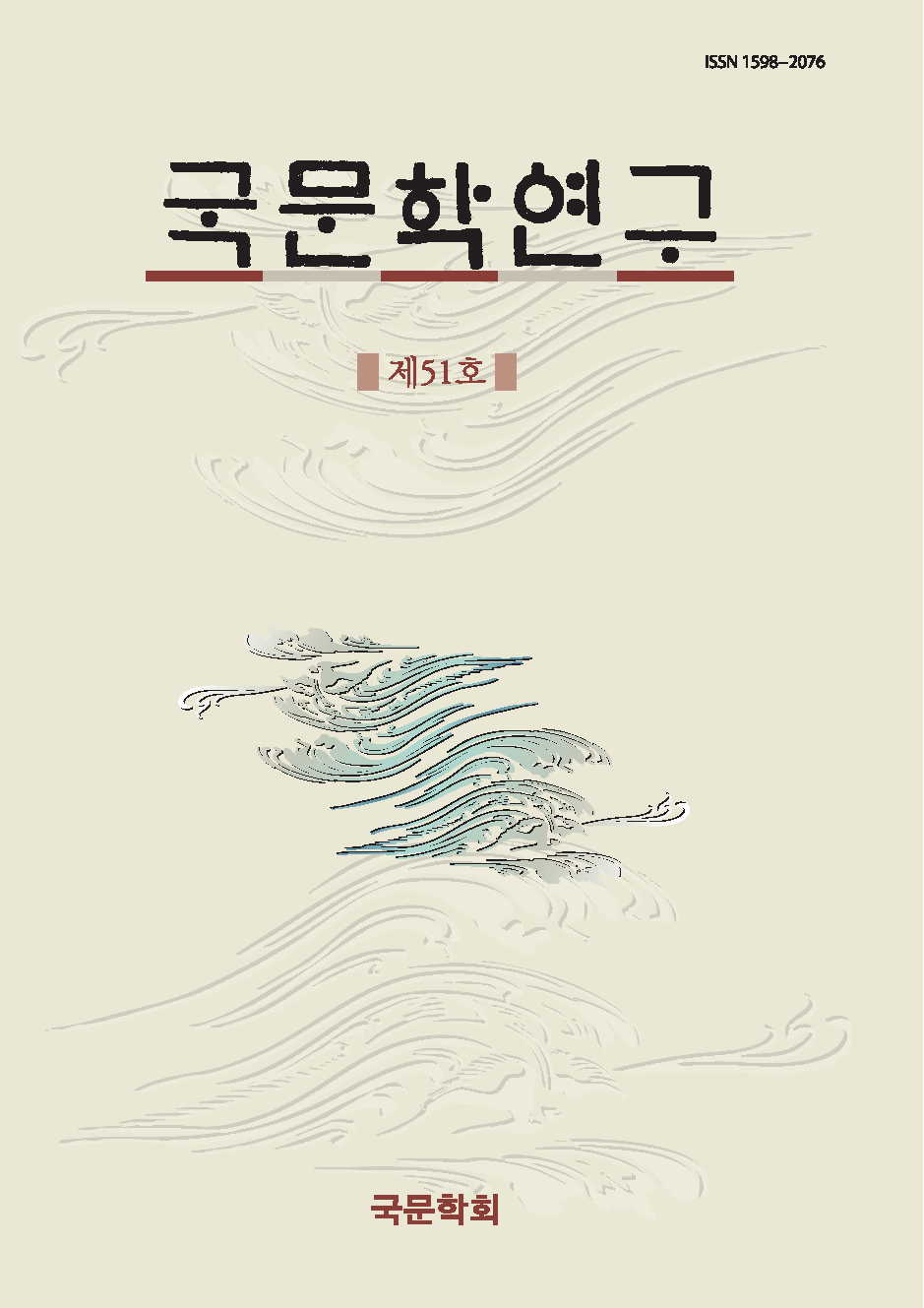학술논문
김려(金鑢)의 우만각시(牛鄤閣氏) -경계에서 다시 쓰는 역사, 마음의 시학-
이용수 19
- 영문명
- Kim Ryeo(金鑢)’s Uman Gakshi(牛鄤閣氏) -Rewriting History at the Boundary: A Poetics of the Mind-
- 발행기관
- 국문학회
- 저자명
- 안지민
- 간행물 정보
- 『국문학연구』제51호, 173~222쪽, 전체 50쪽
- 주제분류
- 어문학 > 한국어와문학
- 파일형태
- 발행일자
- 2025.05.31
8,800원
구매일시로부터 72시간 이내에 다운로드 가능합니다.
이 학술논문 정보는 (주)교보문고와 각 발행기관 사이에 저작물 이용 계약이 체결된 것으로, 교보문고를 통해 제공되고 있습니다.

국문 초록
본고는 담정(藫庭) 김려(金鑢, 1766∼1821)의 『사유악부』(思牖樂府) 120수에 나오는 ‘우만각시’(牛鄤閣氏)를 출발점으로 삼아 작품 전체를 관통하는 김려의 역사적․문학적 지향을 고찰한다.
‘우만’이라는 용어는 『사유악부』, 『의당별고』(擬唐別藁),『귀현관시초』(䢜玄觀詩草)에 등장한다. 2장에서 살펴본 바, ‘우만’은 오랑캐 왕의 딸이었던 이민족 여신의 이름으로 변방 상인들의 여행길 안전을 기원했던 노제(路祭) 의례의 대상이었다. 또 ‘우만’은 조선 북방을 침략한 강성한 종족이자 부령 북쪽 10리에 있는 골짜기 지명을 가리키는 말이기도 했다. 유교적 문인이었던 김려가 이처럼 타자성, 무속성, 역사성이 강하게 함의된 존재에 깊은 관심을 보인 것은 『사유악부』 내에서 변방의 역사를 기술하는 방식이 달라질 수 있음을 시사한다.
이에 3장에서 『사유악부』 내 북방을 방어한 역사적 영웅들의 행적을 그린 시들을 대상으로 서술 방식을 분석하였다. 그 결과 영웅들의 행적은 대체로 민간에서 전해지는 지명담․영웅전설․일화․무속의례․풍습에 의거해 증거되고 있으며, 그 담화 방식은 이민족을 포함한 북방 민중의 시각이나 기억에 의거한 것처럼 구성하면서 때때로 공식 역사 기록과 어긋나는 공통된 특징을 보였다.
이러한 분석을 통해 본고는 『사유악부』가 변방 민중의 심성과 시적 주체의 감응을 통해 사실․합리․일방․공식․중심․기록보다는 진실․꿈과 상상․상호․비공식․주변․구술을 지향하였다고 판단하였다. 따라서 120수는 이러한 문학적․역사적 지향 속에서 타자인 북방 민중 세계와 조우할 것을 예고․희망․상징한 시로 독해될 수 있다.
영문 초록
This paper examines Damjeong(藫庭) Kim Ryeo(金鑢, 1766∼1821)'s literary and historical orientation that penetrates the entire work with the starting point of the Uman Gakshi(牛鄤閣氏) in the 120th poem of “Sayuakbu”(思牖樂府).
The term Uman appears in the “Sayuakbu”(思牖樂府), “Uidangbyulgo”(擬唐別藁), and “Gwihyeongwansicho”(䢜玄觀詩草). As analyzed in Chapter 2, Uman was the name of a goddess belonging to an immigrant tribe, regarded as the daughter of a barbarian king, and was the focus of a street ritual intended to ensure the safety of merchants traveling nearby. It was also a powerful tribe that invaded the northern region of Joseon(朝鮮), as well as the name of a valley located about 10 ri (里) north of Buryong(富寧).
As a Confucian writer, Kim Ryeo demonstrated a profound interest in beings that strongly embodied otherness, historicity, and shamanistic traits. This suggests that the representation of frontier history within the realm of “Sayuakbu”(思牖樂府) could take diverse forms.
Accordingly, the descriptive methods of poems depicting the great deeds of historical heroes who defended the northern frontier in “Sayuakbu”(思牖樂府) were analyzed. The analysis revealed that these poems generally draw upon geographical names, legends of heroes, anecdotes, shamanistic rituals, and folk customs. Moreover, the discourse often exhibited characteristics that at times contradicted official historical records, presenting narratives as if they were based on the perspectives or collective memory of the northern peoples, including immigrant groups.
Based on the results of this analysis, this paper concludes that “Sayuakbu”(思牖樂府) seeks to represent a history rooted in truth, dreams, imagination, mutuality, informality, and orality by resonating with the mentalité of the frontier people. In this context, the 120th poem can be interpreted as a foreshadowing, hope, and symbolization of an encounter with the other northern peoples’ world.
목차
Ⅰ. 머리말
Ⅱ. ‘우만’의 경계성: 이민족 여신, 매개적 공간, 종족
Ⅲ. 역사 기술의 다른 방식: 북방 민중의 기억과 심성(心性)
Ⅳ. 대안의 역사 지향: 꿈과 감응의 시학
키워드
해당간행물 수록 논문
참고문헌
관련논문
어문학 > 한국어와문학분야 BEST
- ‘밈(meme)’을 활용한 고전문학과 문화콘텐츠의 상호 협력과 융복합교육
- 한국어 쓰기 전략 교육을 위한 생성형 AI 활용 연구
- ChatGPT를 활용한 학술적 글쓰기 사례와 교육 방안 고찰 - H대학교 <논리적 사고와 글쓰기> 강좌를 중심으로
어문학 > 한국어와문학분야 NEW
더보기최근 이용한 논문
교보eBook 첫 방문을 환영 합니다!

신규가입 혜택 지급이 완료 되었습니다.
바로 사용 가능한 교보e캐시 1,000원 (유효기간 7일)
지금 바로 교보eBook의 다양한 콘텐츠를 이용해 보세요!



